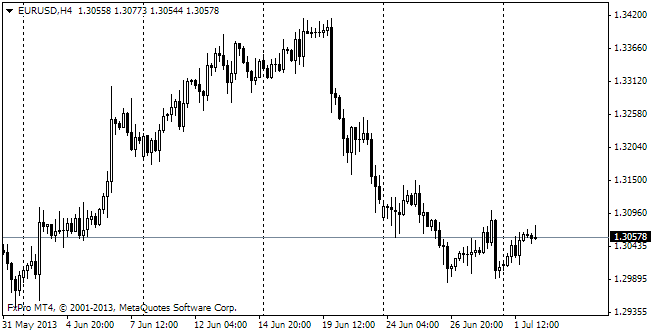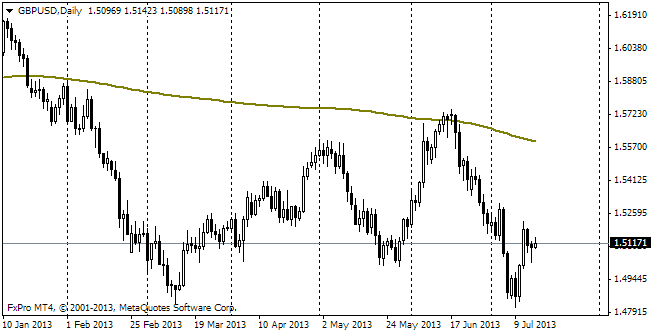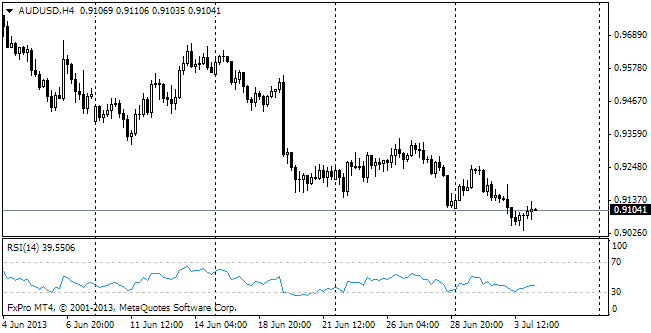EUR/usd
Because of Labour Day in the USA and Canada yesterday's trading session was quiet enough. And this lull, in fact, didn't do any good to the single currency. EUR is stuck in the bog, trading more and more persistently below 1.3200. Yet, we can't say that on the whole the markets were seized by pessimism. Just the opposite, data on higher activity in China's manufacture helped the Asian markets grow and earlier news from the euro zone had made it clear that manufacture in the region was also doing good. So, why isn't the euro growing? In our opinion, traders don't find the current improvements enough to reconsider their views on the prospects of the monetary policy. Greece still needs new loans, the Spanish banking system and the Italian budgetary policy are supported merely by hopes that tomorrow will be better than today, there are no facts that already now the financial affairs are getting better. The EU politicians in the recent years have preferred to take the necessary minimum of measures, not more. So, the lowest point of the crisis in the eurozone takes place only now, in the mid 2013, while it could have happened three-four years ago if Europe acted like the USA. Exactly for this reason now we have the situation when the USA, which first suffered a mortgage crisis and then a financial one, is already seriously considering stimulus rollback in order to overheat the economy and Europe still has to put the rate cut issue on the agenda of the next meeting of the ECB. Yet, probably, there won't be such talks this week, but the previous months are very demonstrative in this regard. If you don't find it sufficient, look at the changes in the industrial production rates and activity of the construction sector. In these indicators the USA have exceeded the pre-crises rates and Europe has just hit the bottom. From the global viewpoint, we shouldn't be very surprised at the failures of the single currency. It's quite possible that in the nearest time eurusd will test its 200-day MA (1.3140). Of course, it takes two to tango and we can't exclude that on its way up the USA will stumble over weakness of the labour market or absence of progress in the housing market. Anyway, this week will be very revealing in this regard. Fasten the belts, it's gonna be fun.

GBP/USD
The next portion of positive news in Britain helped the sterling appreciate not only against the euro, but also against the dollar. The Manufacturing PMI rate in August proved to be the highest one over the last two years and a half. It strengthens our confidence that the third quarter will be favourable for Britain after quite an impressive growth in the second quarter. However, the market is rather cautious. The upsurge to 1.5590 in the pair was followed by a retracement, which threw the pair down by 60 pips. Only at 1.5530 the pound got some support from buyers. The pair, albeit slowly, but is growing hour by hour.

USD/JPY
The yen was falling all through the day yesterday. By the beginning of active trading in Europe bulls had intensified their pressure, which let the yen grow to 99.40, and during the Asian session today the intraday high was already set at 99.70. Again closeness to the level of 100 makes bulls feel more excited. We actually don't expect that the pair will go beyond this level before October.

AUD/USD
The RBA kept the interest rate unchanged (as expected), but also removed from the text of the commentary all hints at the necessity of the rate cut in the near future. We mentioned that it might happen in our yesterday's review. As a result, the Australian dollar rose to the weekly highs, breaking through 0.9000. But we believe that this is just the beginning of a continuous upward movement.
